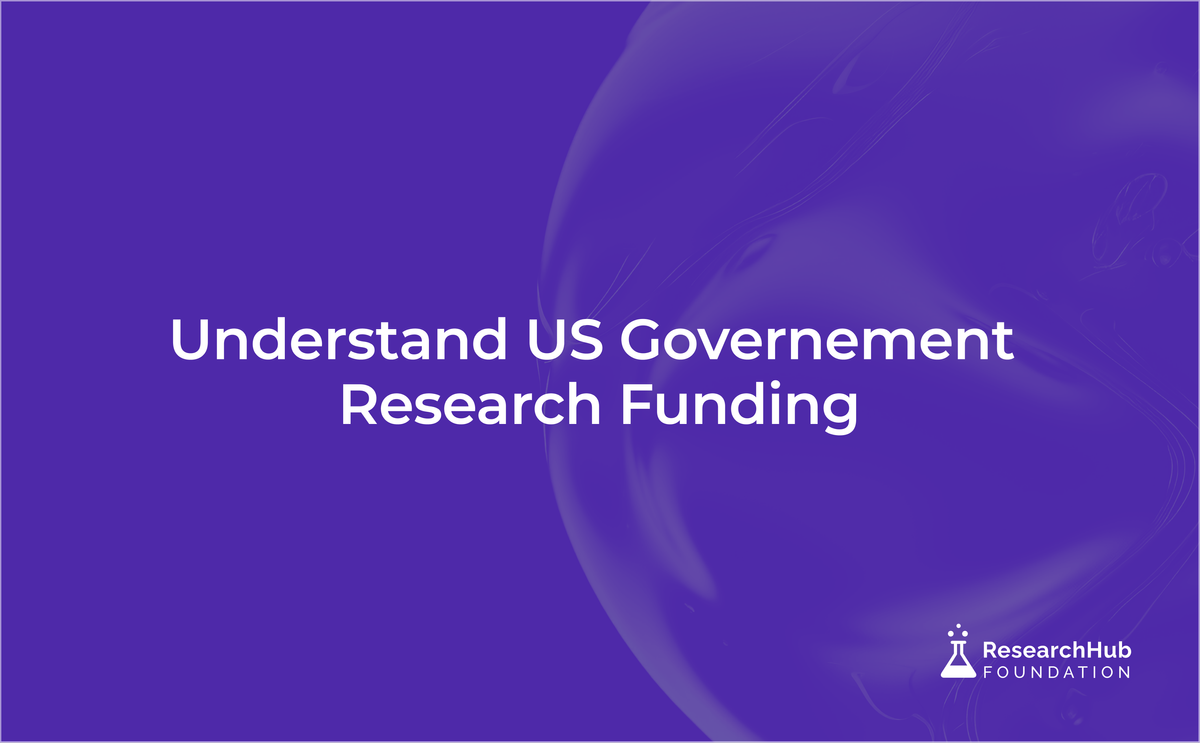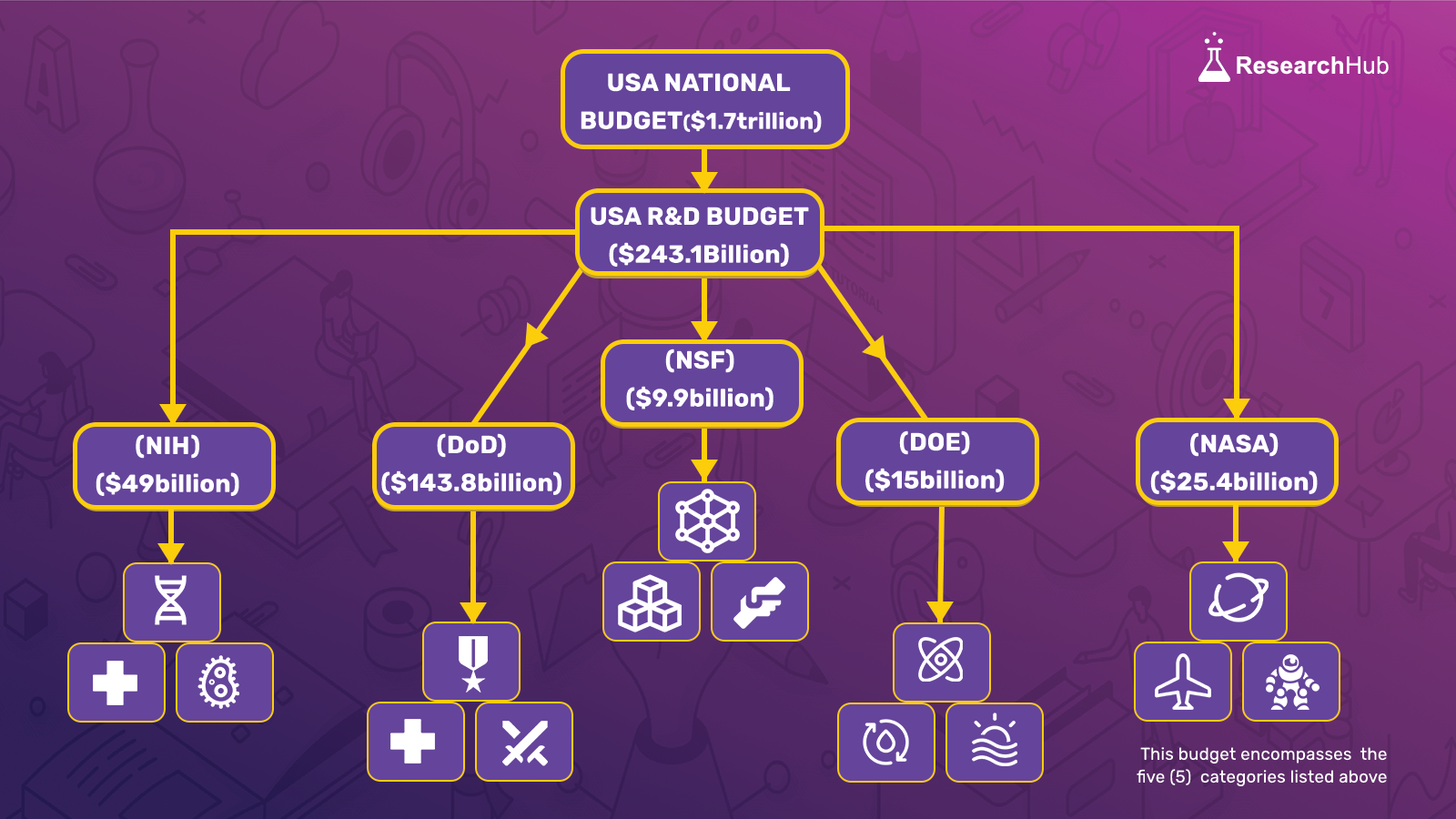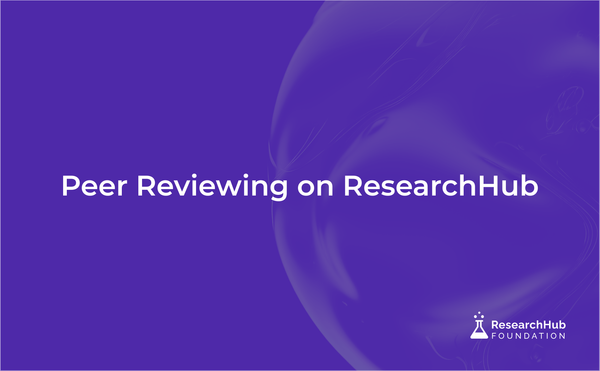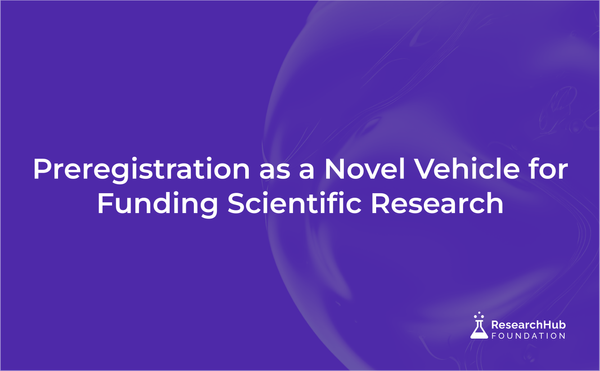A Guide to Understanding US Government Research Funding

Last year, the US government allocated a staggering $243.1 billion to research and development. Yet, securing a slice of this funding pie is no simple feat. It demands more than just merit — it requires a strategic approach.
243.1 billion dollars! — This substantial financial reservoir offers a golden opportunity for researchers aiming to propel their groundbreaking projects.
Understanding the landscape of research funding is crucial. It can be the difference between your project's success and failure. In this post, we will demystify the intricate web of US funding bodies, their budgets, and the mechanisms through which these funds are distributed. Think of it as your essential map, guiding you through the labyrinth of research funding and helping you secure the financial support your project deserves.
The Funding Flow: How Research Dollars Travel from the Government to Agencies and Beyond.
The flow of funding begins with the allocation of the federal budget, where designated amounts are earmarked for various agencies.
1. These agencies, in turn, distribute funds through a rigorous process of grant competitions, peer-reviewed proposals, and strategic initiatives.
2. Researchers submit grant applications outlining their projects' objectives, methodologies, and potential impacts.
3. Successful proposals receive funding, enabling researchers to conduct their studies, hire personnel, and procure necessary resources.

Funding Agencies and Their Fields of Research
National Institutes of Health (NIH): With a budget of $49 billion in the year 2023 the NHI covers research at seven Institutes. The NIH is the largest funder of biomedical research in the world. It covers a vast array of disciplines including genetics, neuroscience, and public health.
Department of Defense (DoD): The DoD's research budget, exceeding $143.8 billion in 2023, is primarily directed towards defense-related research, spanning areas such as cybersecurity, weaponry development, and military medicine. There is a further allocation of $4.1 billion for the DoD's Defense Advanced Research Projects Agency (DARPA) and $132 million for the DoD's National Defense Education Program (NDEP).
National Science Foundation (NSF): NSF boasts a budget of $9.9 billion for the year 2023, an increase of $2 billion from the 2021 enacted funding level. It supports research across all fields of science and engineering, from astronomy to zoology. An additional $880 million was provided in 2023 to accelerate the transformation of research into new technologies for NSF's new Directorate for Technology, Innovation, and Partnerships, and $1.377 billion for NSF's Education and Human Resources Directorate.
Department of Energy (DOE): The budget for the year 2023 provides $15 billion for the Department of Energy's Office of Science, an increase of 11% from the 2021 level. This includes $176 million for AI research and $293 million for Quantum Information Science (QIS) R&D. It also allocates $700 million for ARPA-E (Advanced Research Projects Agency-Energy) and $204 million to build on DOE's Energy Earthshots with critical fundamental research in the Office of Science. DOE allocates significant funds toward research in areas such as renewable energy, nuclear physics, and climate science. Its main focus is on advancing the nation's energy and environmental security.
National Aeronautics and Space Administration (NASA): With a budget of around $25.4 billion, NASA spearheads research in space exploration, planetary science, and aeronautics. An additional $882 million is provided to develop a mission to return geologic samples from Mars to Earth for analysis.
How to Get The Grants?
Now that you have an understanding of the funding landscape you can maximize your chances of securing financial support for your research. Here are some actionable steps to leverage this understanding:
Strategic Alignment: Assess and ensure your research aligns with the missions and focus areas of the funding agencies by tailoring your proposals to address their pressing challenges. Strategically target agencies whose mandates closely match your research objectives to enhance the likelihood of your proposal resonating with reviewers.
Collaborative Opportunities: Explore collaborative opportunities with researchers from multidisciplinary backgrounds. Interdisciplinary projects often attract funding from multiple agencies, broadening your pool of potential resources.
Proposal Refinement: Invest time in crafting well-written, compelling grant proposals. Clearly articulate the significance of your research, its potential impact, and your capability to execute the project successfully.
Tip to get more funds: Use a storytelling framework to write your proposal, it will greatly boost your chances of getting a grant. We explained the 3 acts of storytelling in a long tweet recently.
Unlock the Power of Storytelling to Make Your Grant Proposals Stand Out
— ResearchHub Foundation (@ResearchHubF) May 7, 2024
In today's ultra-competitive grant environment, standing out is more than a goal—it's a necessity. Cognitive psychologist Jerome Bruner highlights the importance of storytelling: “A fact wrapped in a story… pic.twitter.com/eQzlamtYX1
Conclusion
By leveraging this roadmap of research funding, researchers can navigate the complex terrain with confidence, steering their projects toward success and advancing scientific knowledge for the betterment of society.
Further Reading
Check out the Federal Science Budget Tracker to see categories we did not include in this post and to see the budgets from other years, including 2024 and 2025.
Join ResearchHub Today.
Get In Touch
- Twitter :
- Website :
- Discord :





